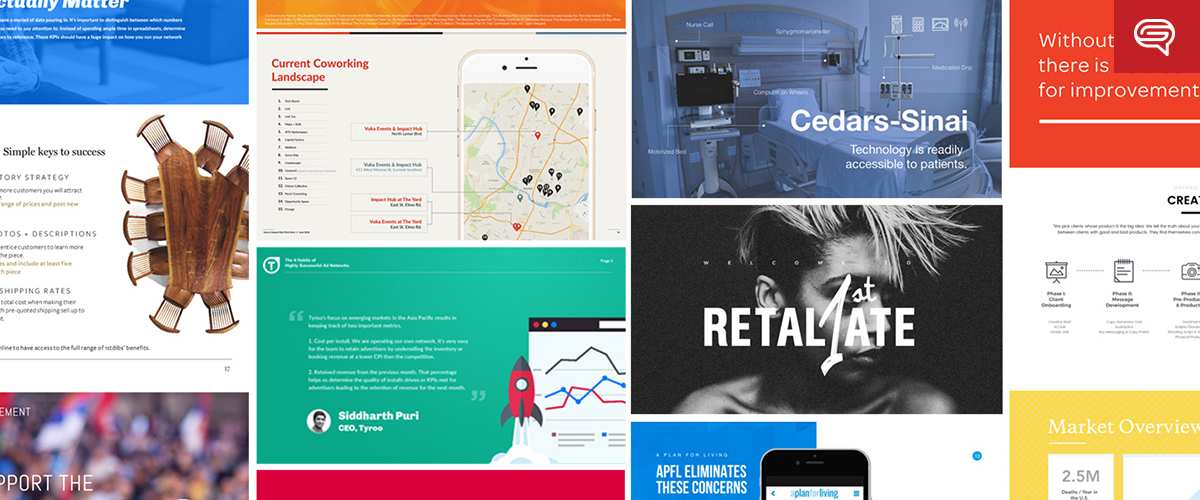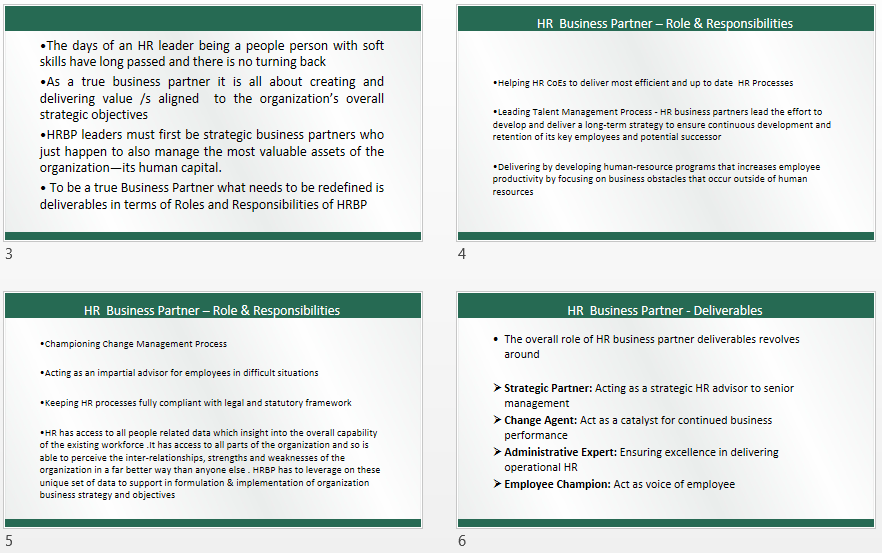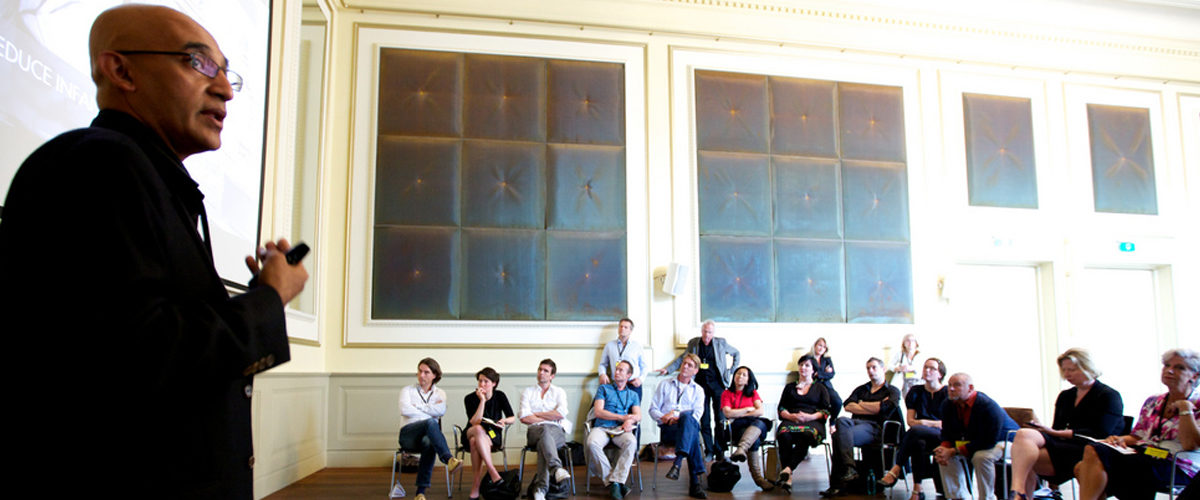
Why do you need a presentation designer? Because every presentation has at least one goal in mind… to engage audiences.
Whether you’re guiding a prospect through a product demo, trying to garner buy-in in the boardroom, or announcing upcoming products at your company’s annual internal conference, your ability to achieve the goals you set out to accomplish with your presentation rests on a four key factors:
- Your presentation skills (obviously)
- The narrative of your presentation
- Your audience’s level of engagement, and
- The design quality of your visual aid (typically a PowerPoint deck)
If there’s one thing we’ve noticed in our seven-year history as an industry-leading presentation design agency, it’s that a lot of people consider themselves knowledgeable in presentation design because they’ve given—and received—so many of them over their educational and professional careers.
Unfortunately, only a few are truly knowledgeable.
Very few.
And when it comes to engaging audiences, the quality of your presentation’s narrative as well as your visual aid’s design matters, especially when the stakes are as high as they are in a sales presentation or the boardroom.
Let’s be honest, most people don’t even consider slide design until the last minute when it’s too late to integrate eye-catching and attention-keeping visual elements or craft a compelling narrative that helps your audience make the important associations you need them to.
By then, tunnel vision has settled in, causing you to overlook engagement-killing mistakes:
- Settling for stock themes
- Inconsistent fonts and design
- Overabundance of useless information that’s considered “essential” by the presenter
—you know, mistakes that make you look old.
Time and again, we’ve seen hopeful presenters put maximum effort into designing their own presentations (or hire inexpensive design services), only to be met with sub par results.
Let us shed light on why professionally designed presentations are so important:
1) Presentation Design Teams Let You Scale
The bigger a company gets, the greater its demand for design services becomes—both in quality and quantity. For this reason, “Design Operations” (DesignOps or DesOps for short) has become a growing area of concern for design teams “seeking to help increase the value they produce for their host organizations and that organization’s customers.”
According to Pinterest, there are three advantages to having a Design Operations mentality:
- Scalabiliy
- Further specialization, and
- Safe harbor designers
Take Airbnb, a company that skyrocketed to success in just a few years. Airbnb’s brand aesthetic remained consistent throughout its rapid growth across the world.
How was this possible?
In a nutshell, Design Operations pinpointed the most important design work and tasked them to Airbnb’s employed designers while outsourcing design processes that bogged down those important deliverables to agencies and individuals who could do them better, cheaper, quicker, and in many cases, all three.
Granted, not every company has (or will have) a dedicated DesignOps team, but management can still benefit from adopting a DesignOps mentality. Because the truth is, even presentations that look like they were just thrown together at the last minute are often the product of hours of someone’s work.
Having access to designers who specialize in PowerPoint—as our next point highlights—helps ensure that specific someone can focus on their actual job role.
2) The Right Designers Know PowerPoint Inside & Out
There are so many aspects and intricacies in PowerPoint that most people aren’t aware even exist.
For instance, the morph tool brings fresh, attention-grabbing animation to dull slides:
Most people have used PowerPoint at some point in their lives, however, we at SlideGenius rarely receive decks from potential customers that scratch beyond the tool’s surface (Plain text, pre-designed templates, and archaic animations, if any).
Presentation designers (and more specifically, designers working for agencies that specialize in PowerPoint) are among the few that truly know how to maximize PowerPoint’s capabilities. They blend their design skills (imagery, text and animation) with mastery of the wide breadth of tools available in the platform.
For instance, are you familiar with “flair” animation? Flair adds infinite looping, free-flowing graphics to PowerPoint presentations, like in Windstar Cruises’ pitch deck (pay close attention to the water on every slide:
You can see how we used flair animation to add cohesion and consistency to Windstar’s deck.
Fully understanding PowerPoint’s capabilities allows presentation designers to integrate visually compelling features into each element of the presentation, including imagery, text, animation, and even animation timing and speed.
Everything is crafted purposefully to elevate the narrative of each slide—and the presentation as whole.
Now, should complex animation be present on every slide? Not necessarily. Adding animation to presentations is an art and can easily be overdone by an untrained eye. The goal here is to engage audiences—the last thing you want is to overwhelm them with unnecessary distractions.
That said, it’s important to stand out, especially when giving sales presentations, and a skilled presentation designer can make your deck standout from a crowd of competitors (or acquire that “WOW!” factor in the boardroom) without overdoing it.
3) Good Designers Are Obsessed with Details
The complexities of graphic design run deeper than simply having good-looking imagery.
Professional designers understand the impact of consistency. Anyone can conduct a quick Google search and grab a few high-quality images, but do those images help tell your story?
Good presentation designers consider the big picture when carefully selecting each element for each slide. They meticulously choose and alter visuals to mesh with one another and deliver a cohesive narrative throughout the presentation.
Check out this example from our friends at Spotify:
Pretty cool, huh? (Learn more about PowerPoint animation capabilities here.)
See how cohesive the narrative and design elements are? The “Bubble” effect really ties in with Spotify’s brand identity and keeps the presentation consistent and visually stimulating. The mark of an expert graphic designer is their impeccable attention to detail.
Apart from the images they choose or create, elements like color, alignment, and fonts deliberate pieces of the overall design.
While often overlooked, these subtle details lend to the message you’re pushing. When everything is put together consistently, it delivers a sense of polish that’s not normally accomplished in ordinary presentations.
4) Presentation Designers Provide Fresh Perspectives
Has your company been using the same PowerPoint template since 2012?
Do the presentations employ the age-old “copy on the left, image on the right” format?
Is animation integrated anywhere?
We’ve all sat through presentations with slides that have too much copy, boring format, and disengaging visuals.
Skilled presentation designers know how important it is to break the mold. After all, it’s the only way to engage audiences.
Let’s take the presentation’s copy, for example. It’s a common pitfall for people to fill their slides top-down with content without realizing most of it could be cut or moved to another slide entirely. Audiences are less likely to read what’s on screen when there’re walls of text staring right back at them:

Concise copy is crucial because it has a direct effect on design. When there’s too much copy, it cripples the design into unappealing blocks of text. Too little copy, on the other hand, risks being too vague and will dilute the presentation’s message.
Ultimately, without the input of others, it’s easy to lose focus on what’s truly essential to the message of your presentation, missing the opportunity to engage audiences. A skilled presentation design team with copywriters can help provide an unbiased viewpoint on old content, identifying areas that you can reduce, remove, or rewrite.
If you’ve been using the same copy-heavy presentation for years, chances are your pitch isn’t as effective as it could be and it’s due for a deck refresh.
Ultimately, the balance between information and design is what separates compelling presentations from the ordinary, and a skilled presentation designer will help you find that coveted sweet spot.
Ready to take your presentation to the next level? Schedule a free presentation consultation now.

